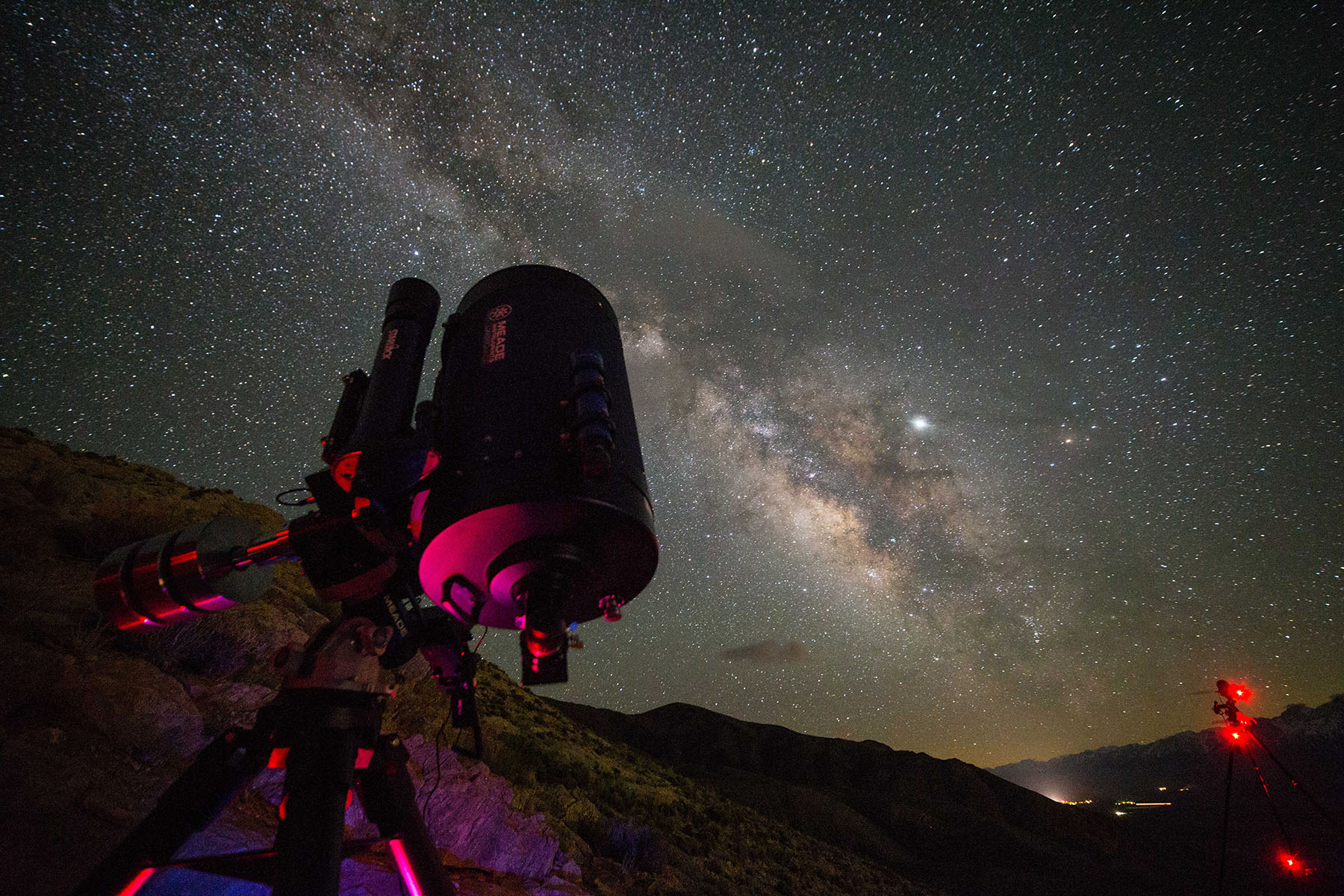Meteor Showers Ranked
Meteors rain down over Mt. Shasta in California (IG: @alpineastro)
Meteor showers rain down from the cosmos throughout the year. These showers occur when Earth passes through a debris field in its orbit. Most of the debris we come in contact with is "dust" shed by comets traveling through the solar system, but meteors can range in size from as tiny as microns to as large as 1 meter. Anything larger than that is considered an asteroid or comet. Meteors typically enter our atmosphere traveling at speeds of 25,000 mph to 160,000 mph.
A meteor strikes over Hell For Sure Lake in the Sierra National Forest during the Perseids
Some annual meteor showers are better than others. Almost all meteor showers are best viewed after midnight as the Earth is beginning to face into its orbit trajectory. Check the moon phase when planning to view a meteor shower. While the best meteor showers are still worth watching no matter what, ones that fall on or near a new moon will always be better due to the darker skies.
Below is a ranking of meteor showers based on the number of meteors per hour they produce.
THE BEST
Geminids
Peaking on December 13th & 14th, the Geminids are the king of all meteor showers — producing up to 120 meteors per hour!
Perseids
The famous Perseids meteor shower peaks on August 12th & 13th, and can produce up to 60 meteors per hour. The Perseids are known to produce a lot of bright meteors.
Eta Aquarids
The Eta Aquarids peak on May 6th & 7th and produce up to 60 meteors per hour in the Southern Hemisphere, and about 30 per hour in the Northern Hemisphere.
Quadrantids
The Quadrantids peak on January 3rd & 4th and produce up to 40 meteors per hour. The Quadrantids are slated for the next Death Valley Stargazing Camp meteor shower party January 3rd and 4th, 2020!
GREAT
Lyrids
The Lyrids peak on April 22nd & 23rd and produce up to 20 meteors per hour. The Lyrids are known for having many meteors which leave long dust trails.
Delta Aquarids
The Delta Aquarids peak on July 28th & 29th and produce up to 20 meteors per hour.
GOOD
Leonids
The Leonids peak on November 17th & 18th and produce up to 15 meteors per hour.
Draconids
The Draconids peak on October 7th and produce up to 10 meteors per hour. The Draconids are best viewed in the early evening unlike most other meteor showers which are best in the early morning.
Taurids
The Taurids peaks on Novemer 4th & 5th, and are a long running but small meteor shower producing 5 - 10 meteors per hour. It is unusual in that the stream of dust which makes up the Taurids comes from two separate sources.
Ursids
The Ursids are a minor meteor shower which peaks on December 21st & 22nd and produces 5 - 10 meteors per hour.
Closeup of @alpineastro’s meteors over Mt. Shasta
Our next meteor shower party is during the Quadrantids Meteor Shower on the nights of January 3rd and 4th, 2020. The party will be held at our Death Valley Stargazing Camp just west of the national park boundary under the dark skies of Panamint Valley. This two night campout will feature lectures from professional astronomers, nighttime photography tips from professional nightscapers, and we’ll have our 14” Meade LX850 on hand to view some deep space objects as well. There will also be some cool SHIFTPODs on hand for you to check out or even stay in. For more information or to reserve your spot, visit DarkSky.me or EasternSierraObservatory.com.
The amazing 14” Meade LX850




